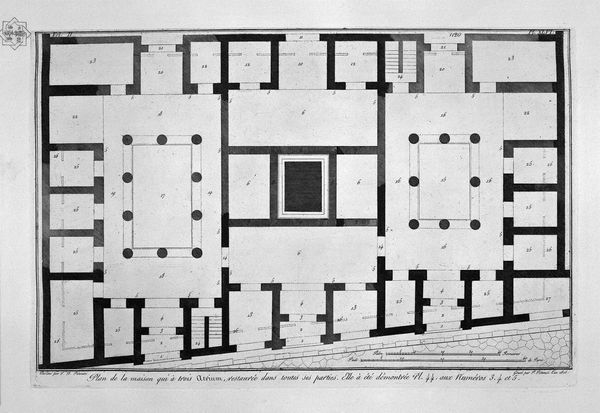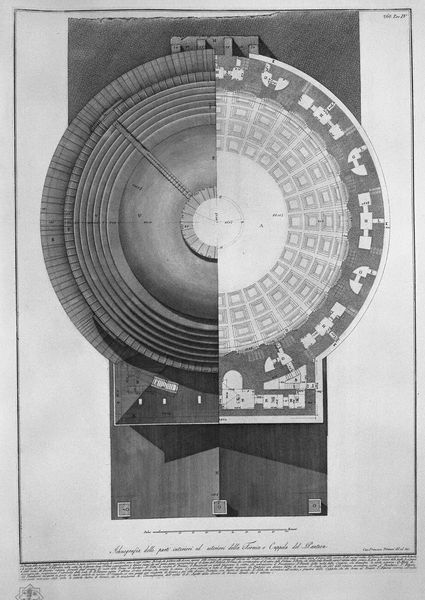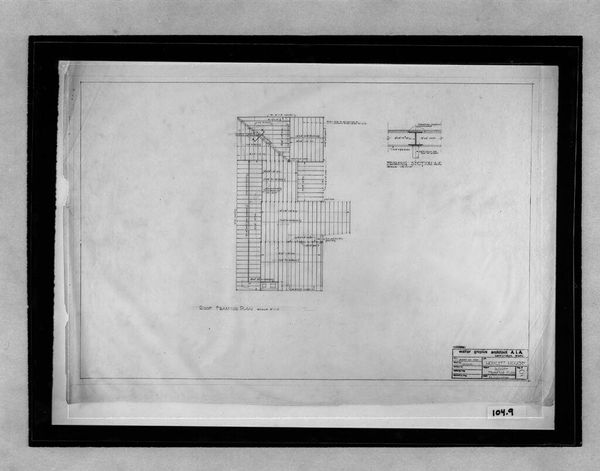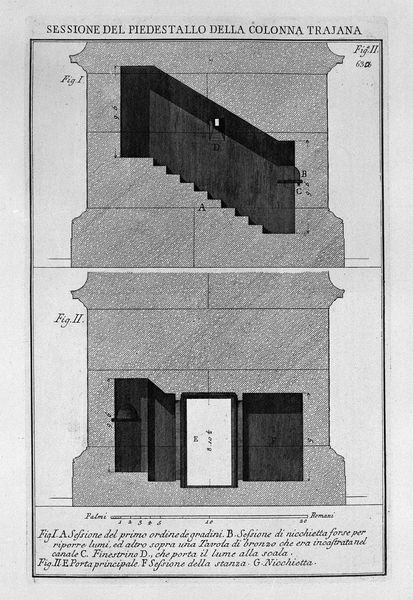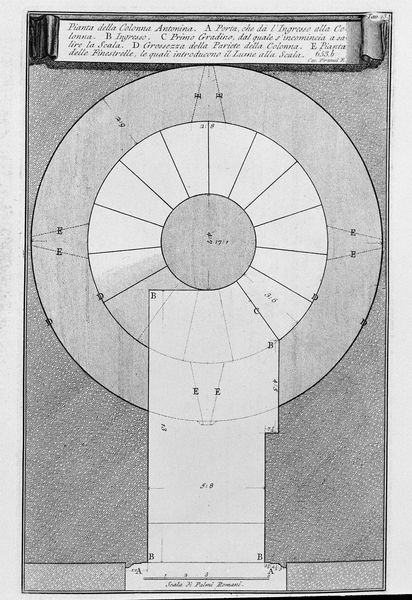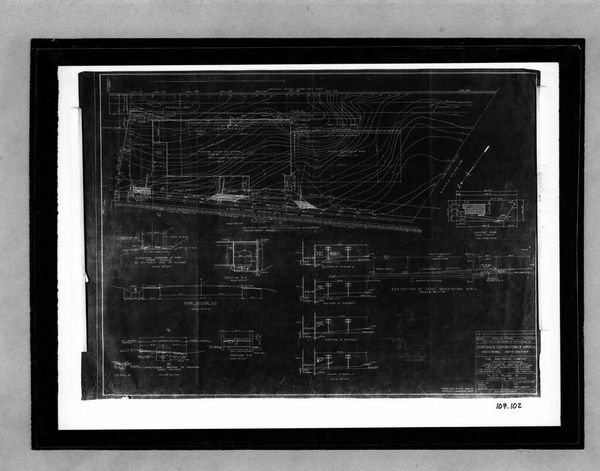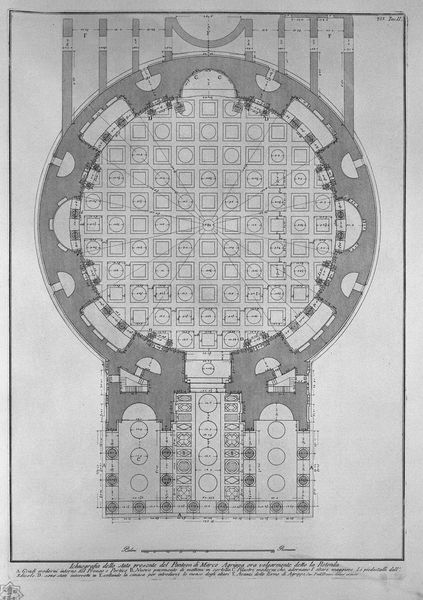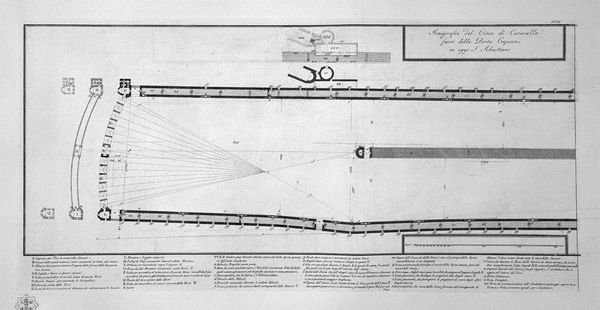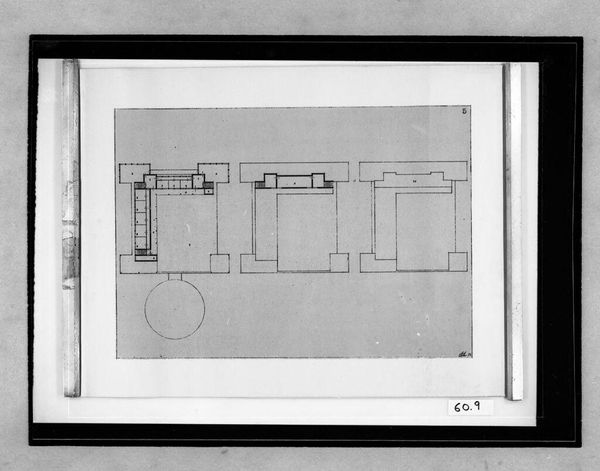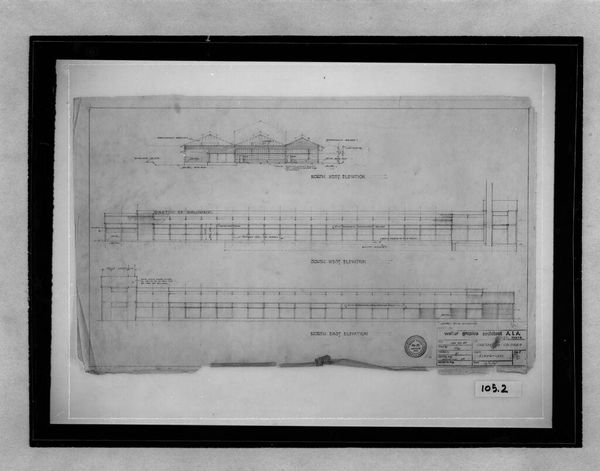
The Roman antiquities, t. 4, Plate XXV. Plan of the Theatre of Marcellus.
0:00
0:00
drawing, graphic-art, print, engraving, architecture
#
drawing
#
graphic-art
#
neoclacissism
# print
#
old engraving style
#
hand drawn type
#
perspective
#
text
#
geometric
#
ancient-mediterranean
#
arch
#
limited contrast and shading
#
line
#
cityscape
#
engraving
#
architecture
Copyright: Public domain
Curator: This compelling print is titled “The Roman Antiquities, t. 4, Plate XXV. Plan of the Theatre of Marcellus,” by Giovanni Battista Piranesi. Its clean lines map out an archeological footprint, a city resurrected on paper. Editor: It’s a ghostly blueprint! It feels less like looking at a ruin and more like an architectural exorcism, the skeleton of grandeur being exposed. There is a strange beauty in this deconstruction, seeing only the stark shapes devoid of people. Curator: The artwork utilizes engraving and drawing, mediums through which Piranesi could meticulously render architectural details and perspectives. Consider the organization here: we see a segmented semi-circle which is bisected; it illustrates two perspectives simultaneously. Editor: Like seeing both sides of a coin, huh? I suppose Piranesi gives us that dual viewpoint to comprehend the space. I can imagine standing within the skeletal remnants of a playhouse. Did viewers feel similarly? Curator: Possibly. Piranesi lived during the neoclassical period. This artistic movement greatly valued clarity, order, and reason—qualities visible here. Editor: Right, and all those perfectly placed lines lend themselves to that clarity. Almost austere! Still, that's also the drawing's strength. It pulls back the curtain to reveal the ancient bones of civilization. Curator: One might appreciate this work as a reflection on time, ruination, and the act of historical interpretation, since engravings like these made this kind of architectural information accessible to scholars. Editor: I agree; Piranesi is definitely summoning ghosts, but he’s also letting us walk among them as thoughtful spectators. What a wonderful paradox of distance and intimacy with history!
Comments
No comments
Be the first to comment and join the conversation on the ultimate creative platform.

